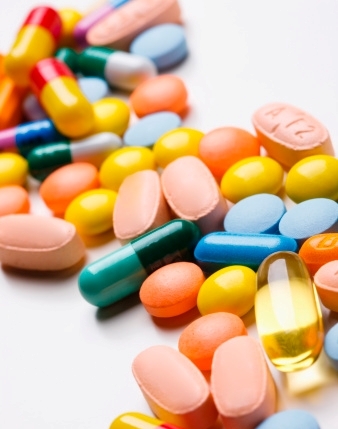How to Read Food Labels: Misleading Labeling Tricks to Watch out For
We live in an age of food-confusion. Without a little training in label-reading, it may not be easy to tell if a food is good or bad for you. Here are a few underhanded labeling tactics that food companies use to sugar-coat the image of their less-than-healthy products.
1) "That’s a Serving?!" – The numbers you see on the label are given on a per serving basis. So to lower the numbers on certain undesirables (cholesterol, sugar, saturated fat), all one must do is lower the serving size. This is the easiest way for companies to dress up a food label, so it is important to take notice of the serving size. For example, many cereals have a serving size of ½ cup, but who actually eats ½ cup of cereal for breakfast? This makes the untrained label reader believe they are eating much fewer calories than they actually are when they pour a bowl of Cheerios.
2) Misleading Terms - Did you know that the “Lite” version of some foods actually have more calories than their regular counterparts? Here are some food marketing terms to know and what they actually mean:
* "Lite" or "Light" – Contains either 1/3 fewer calories or 1/2 fat of the regular version. This can be accomplished by altering the serving size, or by substituting fat calories for other Calories.
- Eg: The Milky Way Lite serving size is almost 25% smaller than its regular counterpart, which is an overtly deceptive way to reduce Calories. So the Lite only has 8% fewer Calories than the regular. Hardly a Lite version.
* "Low Fat" - contains 3 grams of fat per serving or less. This is done by replacing fat calories for sugar calories.
- Eg: Ben & Jerry’s Low Fat Chocolate Fudge Brownie Low Fat has 190 Calories and 36 grams of carbohydrates. Breyer’s Chocolate Ice Cream (Regular) has 160 Calories and 18 grams of carbohydrates. Low Fat is not always the better choice.
* "Fat Free," "Sugar Free," and "Trans Fat Free" - A food may contain up to 0.5 grams trans-fat per serving and still be classified as "trans fat free"! Not only that, but they can list the trans fat content on the Nutrition Facts label as “0 g”! Same goes for sugar and fat. This grossly misleading practice is employed all too often by food manufacturers in response to the growing awareness of the health dangers of trans fats. The only way to be sure your food is truly free of trans fats is to read the ingredients. If you find any of the following terms…
"hydrogenated," "partially hydrogenated," "fractionated" or "shortening"
…the product contains trans fats REGARDLESS of what the label says.
3) Confusing Semantics - Food companies choose their words very carefully when describing their products. Look at this advertisement for Wendy’s Spinach Chicken Salad:
"Crisp romaine with baby spinach, chopped egg and bacon topped with tender chunks of savory chicken breast and a delicious sweet and sour bacon dressing, with only 2.5 grams of fat"
All that contains only 2.5 grams of fat? Don’t kid yourself. The 2.5 grams of fat refers only the term that immediately precedes it (the dressing) NOT the entire salad itself.
The moral of the story is that if a food label seems too good to be true, it probably is. Knowing what you now know, check out some food labels next time you are at the grocery store; they may surprise you.
-
A Low Carbohydrate Diet Works For Weight Loss Dont Believe The Hype
When the average person embarks on a diet or fitness regimen in the ai
-
Diets Dont Work... So How Are You Going To Lose Weight?
Another day, another new diet, another n
-
Lose Weight Properly With Phentermine
Fat isnt something that just shows up on your exterior. Instead it bec
-
Discover How To Burn Fat for Fast Weight Loss - Part 1
Lets face it...it seems like every time you turn your head, there
-
How To Shed Weight In 7 Days
How to lose weight in 7 days is undoubtedly something you CAN learn, p
-
Summer Time Weight Loss Tips
If youre looking for 3 great approaches to weight loss and losing f
- DON'T MISS
- Massive Weight Loss Fast - Hidden Dangers
- If You Have A Problem Losing Weight You Should Have Your Thyroid Checked
- Weight Loss – “If You Want to Lose Weight, Stay at Home”
- Be More Successful With Weight Loss With These Helpful Tips
- Weight lose_Lost of their mind_Food for thought
- Getting Enough H2o Important In Your Weight Loss Success
- Indulging Late Night Cravings: Four Low Calorie Snacks
- Top Steps to Losing Fat Quickly
- Weight Loss Hacks: 10 Super Simple, No-Brainer Ways To Lose Weight!
- Reach Your Weight Loss Goals with Weight Watchers




